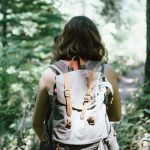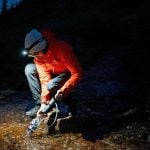8+ Classes You Should Take if You Recreate Outdoors
There is so much to learn to make outdoor adventures safer and more fun. Whether you’re a casual adventurer sticking to hiking local trails or an international traveler seeking the gnarliest ice climbs, there is a class (or three!) that can help you gain confidence before you head out. Here are some awesome courses to bump to the top of your must-do list.
For Everyone Who Works or Plays Outdoors
Wilderness First Aid
You never know when you’ll need to wrap a sprained ankle or tend to a wound outdoors. Learn first aid basics by taking a Wilderness First Aid course. While similar to front-country versions of this class, WFAs focus on using what you have where you are. That means splinting a broken leg with a backpack and sleeping pad and assessing injuries for evacuation potential.


Introductory classes are 16 hours and include hands-on scenarios and injury treatments. Attendees who complete these trainings earn a certificate that’s good for two years. This course is common for scout leaders, camp counselors, and outdoor guides and is offered by organizations like NOLS, REI, and local natural resources departments. Some courses also include CPR.
Pro tip: Consider upgrading to a Wilderness First Responder course if you go to remote locations, travel in large groups, or lead others outdoors. This much longer (70+ hours) and more intense version of a WFA covers CPR and more in-depth info and hands-on experiences similar to WFA classes.
Mental Health Wilderness First Aid
Have you ever gone on a casual trip with a pal and struggled to offer help while they had an anxiety attack at a whitewater set or on a mountain peak? Mental Health Wilderness First Aid offers basic mental health information like recognizing, assessing, and helping people dealing with general stress, panic attacks, and anxiety in the backcountry.
Basic courses are 16 hours and include role-play, situational assessments, and treatment. Attendees who complete the course earn a two-year certificate. Anyone who recreates, lives, or works in remote areas should take this course.
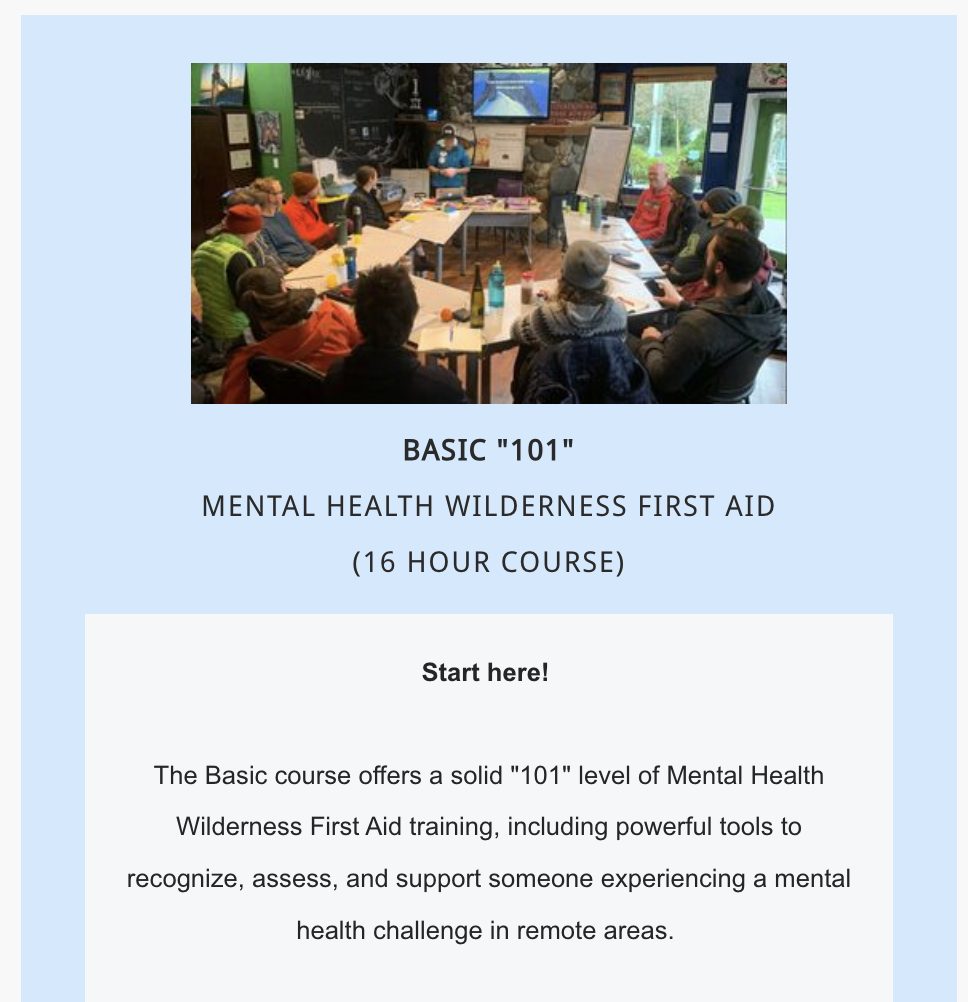
Pro tip: Upgrade to the 40-hour certificate if you take super remote trips, travel internationally, or work outdoors. This class addresses depression, eating disorders, trauma, PTSD, grief, suicidal ideation, and other mental health situations you may experience in the field.
Leave No Trace
“LNT’s the way to be!” is a common phrase, but do you know what that means? It’s not just about leaving the outdoors better than you find it. LNT courses cover deeper topics than packing out trash. They delve into human waste disposal, trail maintenance and etiquette, and more.
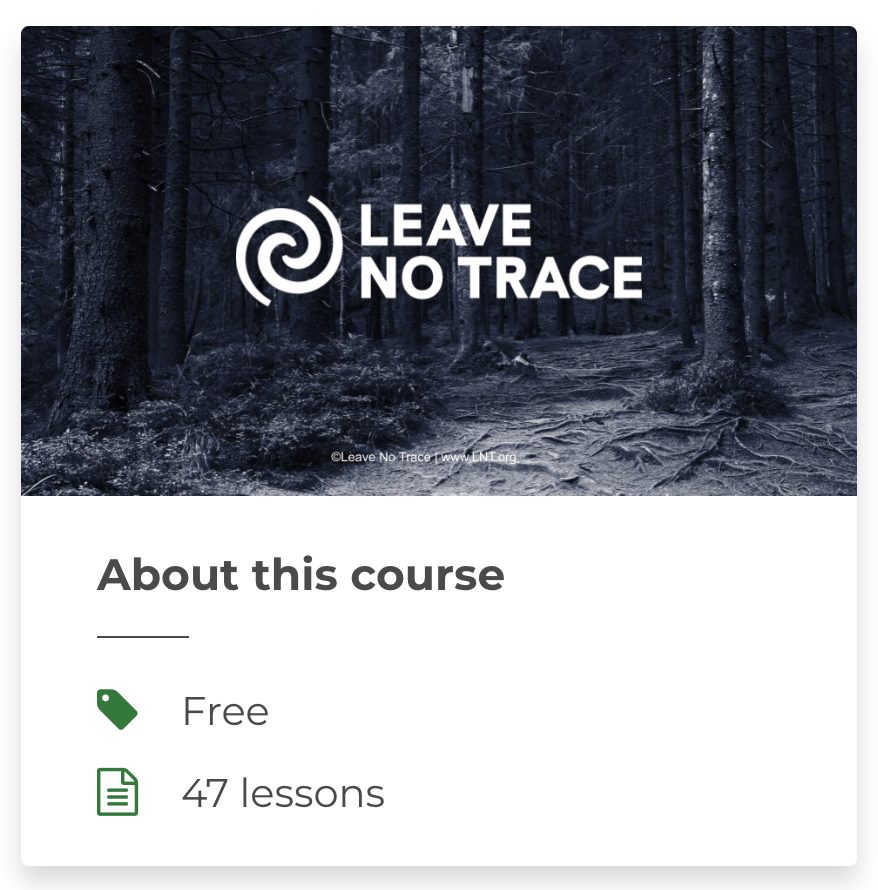
There are many formats for Leave No Trace courses, from free online Leave No Trace 101 classes to two-day skills courses to test your knowledge. Check local outdoor gear stores, natural resources departments, and even public parks for upcoming courses.
Weather
While it’s critical to keep an eye on the forecast before you go out and access in-the-moment weather info while you’re on the go (if you can!), learning weather basics can keep you safe and comfortable outdoors. There are many free online courses on topics like cloud identification, thunderstorms, and how to stay safe during severe weather. Check out Weather Academy for some great starter resources.

If you have favorite outdoor activities like climbing or paddling, look for additional info specific to the areas you recreate, like what to do in lightning conditions at elevation or when you’re on the water.
Check with your local National Weather Station for Spotter classes that train attendees on severe weather spotting, safety, and atmospheric conditions.
For Winter Sport Enthusiasts
Avalanche Safety
AIARE 1, aka Level 1 Avalanche courses, are a must for anyone who works or plays near avalanche areas. These three-day, 24-hour courses cover planning for avalanche terrain travels, identifying avalanche terrain, and companion rescue. You’ll leave this course more confident about making decisions in areas with avalanche potential.
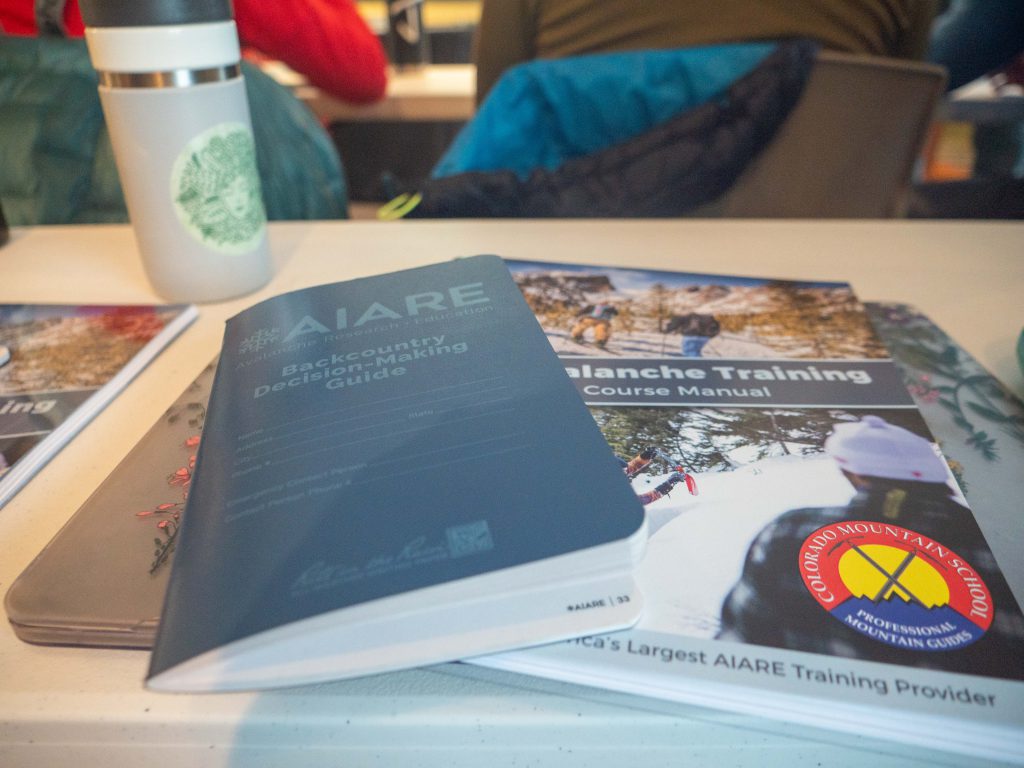
If you are looking for more information, sign up for an Avalanche Rescue class to learn about using transceivers and snow science to assess conditions. This is an excellent course for skiers, snowboarders, and anyone who works on the mountains.
Pro tip: Once you’ve taken AIARE 1, upgrade to AIARE 2 if you recreate in low-resource areas, lead small groups, or want to feel more prepared for handling complex backcountry mountain situations.
For Climbers
Knot Tying
If you’re learning the ropes at a climbing gym or outdoors, it’s time to dig into knot tying. From clove hitches to prusiks, it’s critical to understand and master knot tying to ensure climbing safety. Check out a local climbing gym or climbing club for knot classes to help you get ready for your next go at the wall.
Belaying
Climbing gyms require top roping and lead climbing attendees to be belay certified and prove they know how to handle the ropes. Gyms often offer intro courses for people who are new to the sport or want structured education time. These classes usually last under two hours and include learning about hardware, knots, and rope techniques. Taking a course like this is a great way to meet others of similar skill levels who may make great climbing partners. Check with your local climbing gym or club to learn about upcoming belay classes.

Pro tip: Some gyms or rock climbing clubs offer more advanced courses on top roping, lead climbing, and route setting. Check with your climbing community for info on education opportunities near you.
For Paddlers
Whether you paddle on salt or freshwater, flat or whitewater, everyone should know what to do if their canoe, raft, or kayak flips. The American Canoe Association is a top resource for boating classes. Their skills courses often focus on types of paddling, like flatwater canoeing or river/whitewater kayaking, and address critical skills like how to wet exit (get out into the water) and self-rescue if your boat flips.
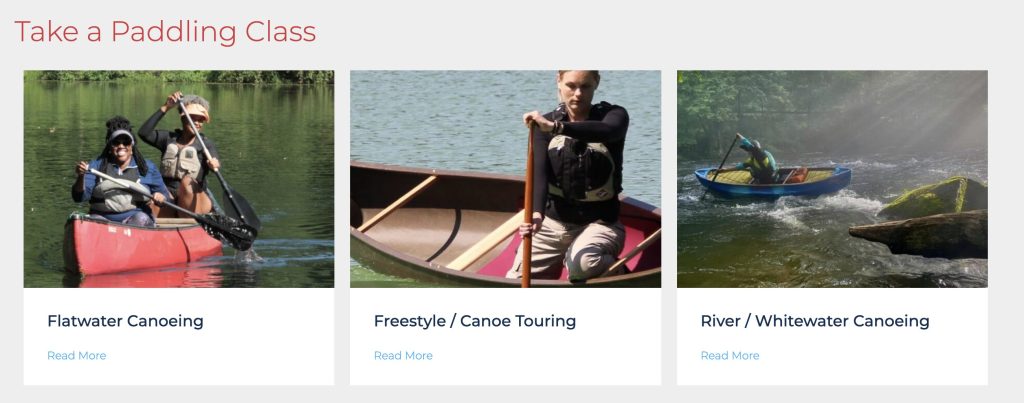

Pro tip: If you kayak, learn how to roll. This essential skill can prove useful on rivers, lakes, and just about anywhere. Plus, it’s fun! Those who paddle in moving water should take river/swift water safety and rescue courses to understand how rivers move, rescue methods, what to do after you get out of the water after a swamp, and when to evacuate.
Note: While there are many online options for outdoor skills and safety/rescue procedures, nothing beats in-person learning. Consider seeking out real-life classes to gain hands-on experience in your chosen outdoor activities. Virtual courses are great refreshers and can provide basic knowledge to get you started.
About the Gear Tester

Hatie Parmeter
Hatie Parmeter (she/her) digs hiking, paddling, and yoga. She's a writer and editor in the outdoor industry and is working toward an MS in Clinical Mental Health Counseling. Soon, you'll find her teaching wilderness mental health resources for outdoor outfitters, guides, camps, and more. Bio image is by Lauren Danilek.


